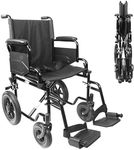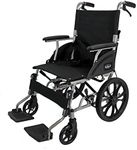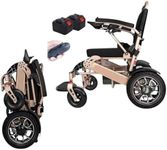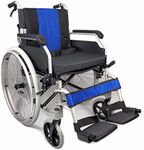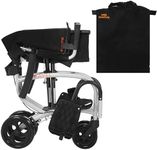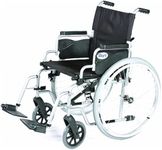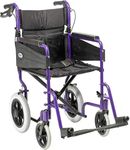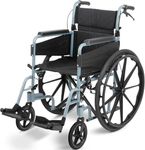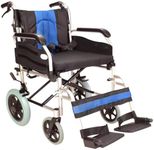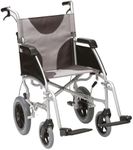Buying Guide for the Best Lightweight Wheelchairs
Choosing the right lightweight wheelchair involves understanding your specific needs and preferences. Lightweight wheelchairs are designed to be easy to maneuver and transport, making them ideal for active users or those who frequently travel. When selecting a wheelchair, consider factors such as comfort, ease of use, and the environments in which you'll be using it. It's important to balance the weight of the wheelchair with its durability and functionality to ensure it meets your lifestyle requirements.WeightThe weight of a wheelchair is crucial because it affects portability and ease of use. Lightweight wheelchairs typically weigh between 15 to 35 pounds. If you need to lift the wheelchair frequently, opt for a model on the lighter end of the spectrum. However, ensure that the lighter weight does not compromise the wheelchair's durability and stability. Consider your strength and the frequency of travel when choosing the right weight for you.
MaterialThe material of a wheelchair impacts its weight, durability, and comfort. Common materials include aluminum, titanium, and carbon fiber. Aluminum is lightweight and affordable, making it a popular choice. Titanium offers a balance of lightness and strength but is more expensive. Carbon fiber is the lightest and strongest option, ideal for active users who prioritize performance. Choose a material that aligns with your lifestyle and budget while ensuring comfort and longevity.
FoldabilityFoldability refers to how easily a wheelchair can be collapsed for storage or transport. This feature is important for users who travel frequently or have limited storage space. Some wheelchairs offer quick-release mechanisms for easy folding, while others may require more effort. Consider how often you'll need to fold the wheelchair and the available space in your vehicle or home. Opt for a model that offers convenient foldability without compromising on stability.
Seat WidthSeat width is a key factor in ensuring comfort and proper support. It typically ranges from 16 to 20 inches. A seat that's too narrow can be uncomfortable, while one that's too wide may not provide adequate support. Measure your hips and add a couple of inches to determine the ideal seat width. Consider your body type and any additional cushioning or accessories you might use when selecting the right seat width for your wheelchair.
Wheel TypeWheel type affects the wheelchair's maneuverability and performance on different surfaces. Options include solid, pneumatic, and semi-pneumatic wheels. Solid wheels are maintenance-free and suitable for indoor use. Pneumatic wheels offer better shock absorption and are ideal for outdoor use but require regular maintenance. Semi-pneumatic wheels provide a balance between the two. Consider where you'll primarily use the wheelchair and choose a wheel type that offers the best performance for those environments.
AdjustabilityAdjustability refers to the ability to modify the wheelchair to fit your needs, such as adjustable armrests, footrests, and backrests. This feature is important for ensuring comfort and accommodating changes in your physical condition. Look for models that offer easy adjustments to enhance your comfort and support. Consider your current and potential future needs when evaluating the adjustability options of a wheelchair.
